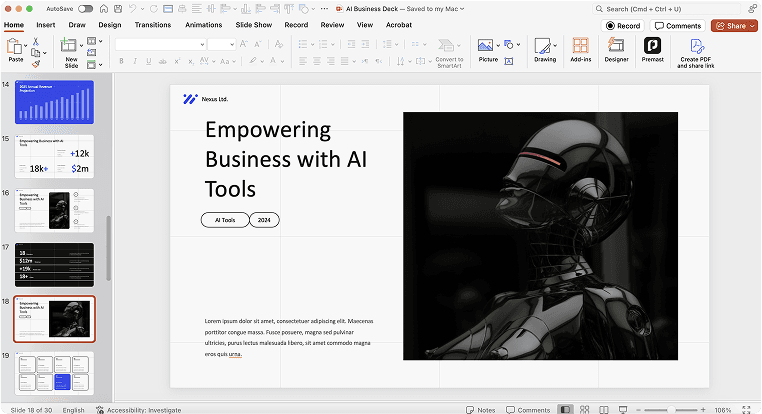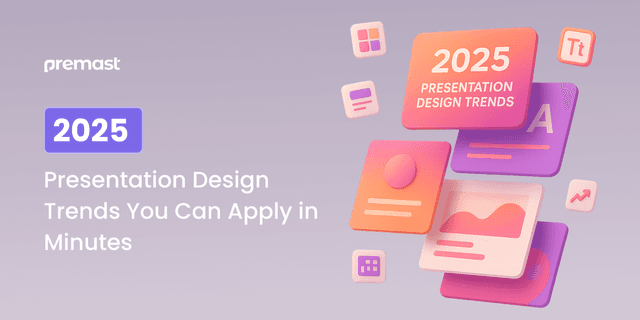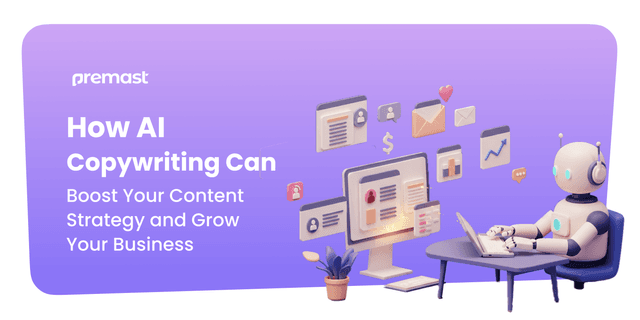
Top Digital Product Design Tips to Boost User Engagement
In today’s competitive digital world, lasting success comes from a clear strategy focused on user engagement. The best products are built with a mix of smart design, user psychology, and data-driven insights. It’s not just about looking great, it’s about creating real connections with your customers through thoughtful, well-planned experiences.
Customer engagement plays a key role in driving retention, boosting conversion rates, and fueling overall business growth. When users actively engage with your digital product, they go beyond being just customers; they become loyal fans and potential brand advocates. High engagement reflects strong interest, trust, and a deeper connection to your brand. The good news? This level of interaction isn’t left to chance. It stems from thoughtful design and smart engagement strategies. In this article, we’ll explore the key decisions and proven tactics that help businesses create meaningful connections with their customers.
Exploring the Psychology of What Keeps Users Engaged
User engagement isn’t just about keeping visitors on your platform; it’s about sparking real, valuable interactions that matter. At its heart, engagement is fueled by simple yet powerful psychological principles that shape how people connect with digital experiences. By understanding these factors, businesses can better capture user interest and build lasting relationships with their audience.
Why You Need Motivation, Ability & Triggers to Make a Change
Customer engagement doesn’t happen by chance; it’s built on three essential elements: motivation, ability, and a well-timed prompt. This proven framework was introduced by behavioral expert BJ Fogg, who explains that for users to take action, they need to (1) want to do it, (2) be able to do it easily, and (3) receive a nudge at just the right moment.
When creating digital products or experiences, ask yourself:
-
What motivates your users to interact with your product or service?
-
Is the process effortless for them to reach their goal?
-
What kind of prompts or triggers will guide them to act at the right time?
By addressing these questions thoughtfully, you can design authentic and engaging user experiences without relying on manipulative tactics that push users away. The result? A stronger connection with your customers and better long-term engagement.
How Personalization Builds Genuine and Lasting Connections
A personalized approach is all about understanding and meeting your customers’ unique needs and preferences. It’s far more effective than using a one-size-fits-all strategy. When people feel like your product or service is tailored just for them, based on their behavior, interests, and goals, they’re more likely to engage, trust your brand, and stay loyal. In this guide, we’ll explore practical ways to bring personalization to life, helping you create better experiences and stronger connections with your users.
Implementing effective personalization
Personalization is more than just using someone’s name; it’s about creating a truly tailored experience for every user. Here’s what that looks like:
-
Delivering content that matches each user’s behavior and preferences
-
Customizing the interface to fit how individuals interact with your product
-
Recommending products or content that align with their interests
-
Sending timely, relevant messages during key points in their journey
According to research, 62% of consumers say they’ll stop being loyal to a brand that doesn’t deliver a personalized experience. That’s a big number. By using customer data to create smart, dynamic interactions that grow with each user, your digital product can build stronger relationships and boost long-term engagement.
For instance, a personalized onboarding flow, one that adjusts based on a user’s skill level or preferences, can make a great first impression, drive early engagement, and reduce drop-offs.
Effective Gamification Strategies That Truly Engage Users
Gamification is quickly becoming a game-changer in digital product design. By adding playful elements like points, rewards, and challenges to non-game experiences, businesses can make everyday interactions more fun and engaging. When used the right way, gamification can turn routine tasks into exciting journeys that keep users coming back. In this article, we’ll explore the key elements of gamification, why they matter, and the best strategies to successfully bring this concept to life.
Effective gamification elements
Gamification is a powerful strategy that uses game-like elements to spark motivation and encourage deeper user interaction. When done right, it transforms customer journeys into fun, rewarding experiences that keep people returning.
The most effective gamification strategies include:
-
Exciting challenges and clear goals that inspire users to take action
-
Reward systems that recognize and celebrate progress
-
Leveling-up mechanics that show advancement and growth
-
Social features that add friendly competition or teamwork
However, simply adding gamified elements won’t guarantee high engagement. The real impact comes from offering meaningful rewards. If the rewards feel empty or pointless, users will quickly lose interest.
To truly engage your audience, offer valuable incentives like:
-
Points that can be redeemed for real benefits
-
Exclusive access to premium features
-
Discounts or special offers
The key is to ensure that every reward feels worth the effort. When users see real value in interacting with your digital product, they’ll be more motivated to stay involved and keep coming back.
Each gamification element has its purpose. For more information about this, see the table below:
| Gamification Feature | Why It Matters | How to Use It |
|---|---|---|
| Fun Challenges | Encourage users to complete goals | Create daily tasks that get a little harder over time |
| Exciting Rewards | Celebrate user success and progress | Offer points, digital badges, or real-world perks |
| Clear Progress Tracking | Help users see how far they’ve come | Use levels, milestones, or progress bars |
| Social Interaction | Build a sense of community and connection | Add leaderboards or team-based challenges |
A great example of successful gamification is the popular language learning app Duolingo, which keeps users engaged with fun features like points, levels, and daily streaks. Similarly, fitness apps like Fitbit use challenges and rewards to motivate users to stay active and reach their health goals.
How to Build Feedback Loops That Keep Users Coming Back
Creating smart feedback loops is one of the most powerful ways to boost user engagement and keep people returning to your product. These loops form a cycle: users take action, the product responds, and that response encourages them to take another step. With the right systems in place, feedback becomes a natural driver of ongoing engagement.
Designing Feedback That Feels Personal and Rewarding
When users get meaningful responses to their actions, they feel seen, and that matters. Feedback creates a connection, helping users feel like their time and efforts are valued. This emotional bond is what motivates continued interaction.
Here are a few key components of effective feedback loops:
-
Instant responses to user activity
-
Visual or audio cues that show their input was received
-
Progress bars or milestones that mark achievement
-
Timely updates about new features, content, or progress
The trick is to match the feedback to the action: small actions might need a subtle nudge, while big achievements should feel worth celebrating. The better the feedback, the more users will want to stay engaged.
By thoughtfully designing these loops, you create momentum, a sense of progress that keeps users coming back.
Boosting Engagement Through Social Features
We’re wired to connect. That’s why digital experiences that tap into social interaction often see stronger engagement and retention. Adding community-driven features helps users feel like they’re part of something biggerand that sense of belonging keeps them active.
Top Social Features That Encourage Ongoing Use
When users feel like they’re on a shared journey, engagement deepens. Here’s how you can bring that to life:
-
Online communities where users can connect with others who share similar interests or goals
-
Sharing tools that let users show off accomplishments or progress
-
Collaborative features that support teamwork and group efforts
-
Social proof elements like “most popular” badges or trending content indicators
While these tools can enhance engagement, always respect user privacy. Make it easy for users to control what they share and with whom. The aim is to foster community and motivation, not pressure or comparison.
Keep Users Coming Back With Smart Design
Engagement doesn’t happen by accident. By combining thoughtful feedback mechanisms with authentic social features, you create an experience that feels rewarding and connected. That’s what brings users back and turns them into loyal advocates for your product.
Boost Engagement with Data-Driven Optimization for Continuous Improvement
Creating a successful digital product isn’t a one-time effort; it’s a continuous journey. To truly connect with your users, you need to regularly analyze how they interact with your product and use that insight to make smart, data-driven decisions.
Why User Data Matters for Digital Success
Understanding your users is key to improving their experience. By keeping a close eye on user behavior, you can uncover valuable opportunities to enhance engagement, reduce friction, and optimize the customer journey.
Essential Engagement Metrics to Monitor
Tracking the right metrics can reveal how users engage with your product and where improvements are needed. Focus on:
-
User activity trends: Daily, weekly, and monthly active users
-
Session length and frequency: How often users return and how long they stay
-
Feature usage: Which features do users engage with most
-
Retention rates: How many users stick around over time
-
Conversion rates: Completion of key actions like sign-ups or purchases
These insights help pinpoint problem areas and highlight what’s working well, so you can make better, faster decisions.
The Continuous Improvement Cycle
Engagement optimization is an ongoing process. Here’s a simple framework to follow:
-
Collect user behavior data from your product
-
Analyze patterns to uncover insights and growth opportunities
-
Create hypotheses for improvements or new features
-
Implement changes based on your findings
-
Measure results and refine your strategy continuously
By following this cycle, you ensure your digital product evolves alongside your users’ needs—keeping them engaged and coming back for more.
Striking the Right Balance Between Innovation and Usability
Innovative features can make your digital product stand out, but they only work when paired with excellent usability. No matter how advanced your product is, users will quickly lose interest if it’s difficult to navigate or too complex to use. The key? Find the right balance between forward-thinking design and user-friendly functionality.
How to Balance Usability with Innovation
Creating a smooth, intuitive experience while offering modern features is no easy feat, but it’s essential for long-term user engagement. Here’s how you can achieve that balance effectively:
-
Roll out new features gradually and support them with clear, helpful guidance.
-
Keep core functionality consistent so users know what to expect.
-
Test new ideas with real users before going live to spot usability issues early.
-
Offer familiar alternatives for users who may not be ready to embrace new patterns.
At its core, innovation should enhance the user experience, not complicate it. The most successful digital products solve real problems in creative ways without overwhelming users. By focusing on clarity and value, you can stand out while keeping usability at the forefront.
Additional Tips to Boost User Engagement
Looking to go beyond the basics? Here are some proven tactics to keep users coming back:
-
Offer responsive customer support to resolve issues quickly and build trust.
-
Foster community through social media, forums, or interactive features.
-
Provide regular updates and fresh content to keep things interesting.
-
Design thoughtful onboarding flows to help users see value from the start.
The most effective engagement strategies are the ones tailored to your users’ needs and aligned with your business goals. What works for one product may not work for another, so user research, testing, and feedback are key.
Key Takeaways for Product Teams
High engagement doesn’t happen by accident. It’s the result of intentional design that considers how users think, feel, and behave. Personalization, feedback mechanisms, social interaction, and continuous improvement all contribute to experiences that feel natural and rewarding. When done right, these strategies increase user retention, drive consistent interaction, and elevate the overall value of your digital product.
Let’s visit Premast to download free PowerPoint templates. You can also visit Premast Blog to keep up-to-date with new templates and get design tips from our PowerPoint experts!
Spread the word
Start for free.
Design, manage and share your Presentation and branded content









